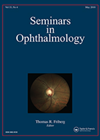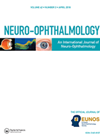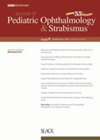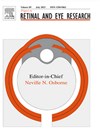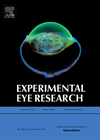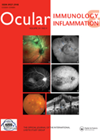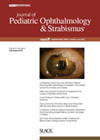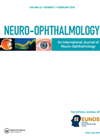You searched for "retinitis"
Non-contact-lens-associated acanthamoeba keratitis
1 October 2015
| Jaya Myneni
|
EYE - Cornea, EYE - General
|
Acanthamoeba keratitis, microbial keratitis, microscopy, non-contact-lens, time of presentation
This retrospective study was done to study the clinical presentation and microbiological results of non-contact-lens-related acanthamoeba keratitis (AK). One hundred and ninety-four patients with microbiological / histopathological diagnosis of AK over four years were included. All patients had corneal scrapings...
Light reflex in preterm infants
In this study, the pupillary size and light reflex was examined in premature infants using infrared video-pupillography and stimuli of red and blue light. Only eyes of infants without retinopathy of prematurity were included in the study. Pupillary light reflexes...Normal reference values for the RETeval device
The purpose of this study was to provide normative data of full-field electroretinography (ERG) responses in the paediatric population using the RETeval device in healthy children with normal retinas. This was a prospective study of 38 eyes of 20 patients...Bacterial keratitis through the window of the known unknowns
This review article provides an up-to-date summary of current challenges in research and management of bacterial keratitis. The authors highlight that there is no current agreement on the criteria that should define bacterial keratitis; the role of investigation is unclear,...RPE use similar pathway to regulatory T cells to inhibit immune response
1 December 2014
| Graham Wallace
|
EYE - Vitreo-Retinal
Retinal pigment epithelial (RPE) cells form an important part of the blood-retinal barrier that protects the neuronal cells responsible for sight. RPE cells are involved in innate and adaptive immune responses via expression of surface molecules and release of cytokines....
HLA-B27 anterior uveitis
1 June 2017
| Saruban Pasu
|
EYE - Vitreo-Retinal
HLA-B27 has previously been shown to have an association with uveitis, ankylosing spondylitis, reactive arthritis, ulcerative colitis and psoriasis. The authors of this review provide an update of the epidemiology of HLA-B27 associated ocular disorders. There is great variation amongst...
Uveitis and juvenile arthritis costs
The purpose of this study was to evaluate whether cost, prior insurance authorisation concerns and subspecialty practice influence therapeutic decisions in the treatment of uveitis associated with JIA. The authors developed an email questionnaire that included a brief vignette of...Immunoglobulin G4-related ophthalmic disease – what is it? (Part 1)
3 February 2023
| Li Yen Goh
|
EYE - General
Part 1: Epidemiology, classification, radiology, histopathology and associations (see Part 2 here) In this two-part series, Li Yen Goh reviews IgG4 disease and reminds us of diagnostic challenges faced. Introduction Immunoglobulin G4 (IgG4) disease is a recently recognised idiopathic systemic...
UKISCRS 47th Annual Congress Preview
1 November 2023
| Samuel Verdin
|
UKISCRS, Eye News, Preview, Congress, Event, Coverage, David Lockington, Paul Ursell, London
Check out the Eye News preview for UKISCRS' 47th Annual Congress in London, 1-3 November.
Does religious fasting affect intraocular pressure or retinal parameters?
1 December 2022
| Claire Howard
|
EYE - Neuro-ophthalmology
|
Religious fasting, Retina, macula, optical coherence tomography angiography
Nearly one billion Muslims fast every year during the month of Ramadan. Due to the difference between the lunar and solar calendars, religious fasting time can range from 11 to 17 hours per day. This prolonged abstinence from food and...
Neurotrophic keratitis
The authors present an overview of the aetiology, diagnosis, current and future management options of neurotrophic keratitis. This is a degenerative corneal disease that occurs following the compromise of trigeminal innervation, leading to hypoesthesia and / or anaesthesia. The aetiology...Audiology and ophthalmology: A comparative perspective on diagnostics and patient care
4 December 2024
| Rosalyn Painter, Christopher Gordon, Anthony Vukic
|
EYE - Imaging, EYE - Vitreo-Retinal
I’m here with Chris Gordon and Anthony Vukic from Gloucestershire Hospitals NHS Foundation Trust to find out how two professions that may appear unrelated on the surface actually have a lot in common. Some of this article might surprise you....

